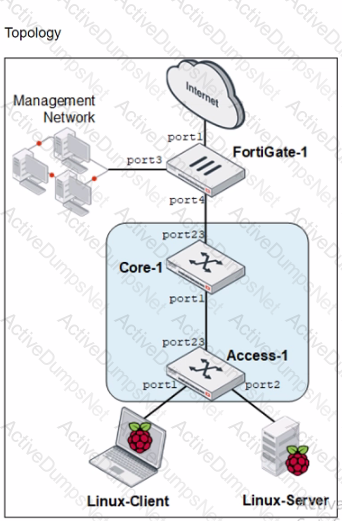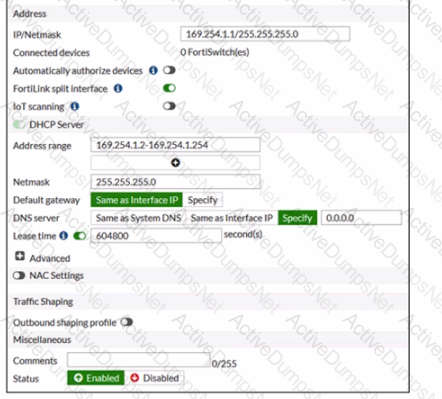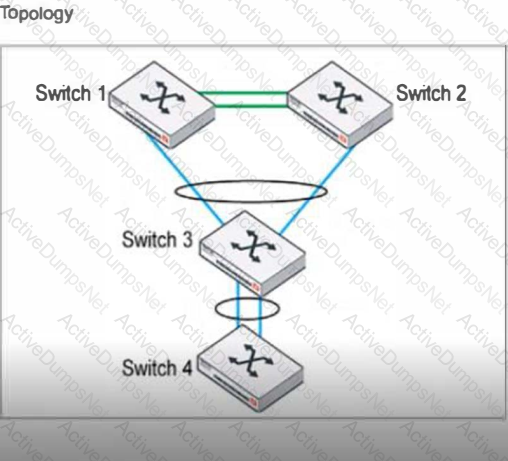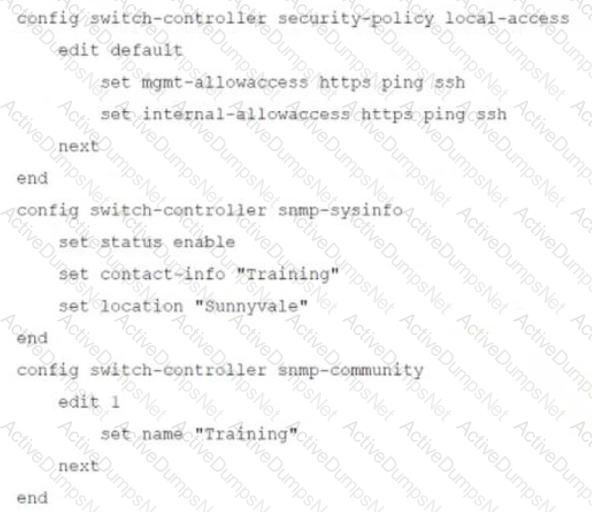Fortinet NSE6_FSW-7.2 NSE6_FSW-7.2 - Fortinet NSE 6 - FortiSwitch 7.2 Exam Practice Test
NSE6_FSW-7.2 - Fortinet NSE 6 - FortiSwitch 7.2 Questions and Answers
Refer to the exhibit.

Which two statements best describe what is displayed in the FortiLink debug output shown in the exhibit? (Choose two.)
How are the 'by VLAN redirect MAC address quarantine' mode and the 'by redirect MAC address quarantine' mode on FortiGate similar?
Refer to the exhibits.


You are asked to ensure that managed FortiSwitch devices are reachable by other devices, such as SNMP and other management tools across your network.
Which setting must you configure to ensure traffic from other devices in the network reaches FortiSwitch?
What can an administrator do to maintain the existing standalone FortlSwltch configuration while changing the management mode to FortLink?
Refer to the configuration:

Which two conditions does FortiSwitch need to meet to successfully configure the options shown in the exhibit above? (Choose two.)
What type of multimode transceiver can be used to split a 40G port?
What feature can network administrators use to segment network operations and the administration of managed FortiSwitch devices on FortiGate?
Exhibit.

You need to manage three FortiSwitch devices using a FortiGate device. Two of the FortiSwitch devices initiated a reboot after the authorization process. However, the FortiSwitch device with the configuration shown in the exhibit. did not reboot All three devices completed FortiLink manage-ment authorization successfully.
Why did the FortiSwitch device shown in the exhibit not reboot to complete the authorization pro-cess?
The management mode was set to use FortiLink mode.
Which is a requirement to enable SNMP v2c on a managed FortiSwitch?
Exhibit.

Two routes are not installed in the forwarding information base (FIB) as shown in the exnibit. Which two statements about these two route entries are true? (Choose two.)
Which statement about the configuration of VLANs on a managed FortiSwitch port is true?
Which two statements about VLAN assignments on FortiSwitch ports are true? (Choose two.)
FortiGate is unable to establish a tunnel with the FortiSwitch device it is supposed to manage Based on the debug output shown in the exhibit, what is the reason for the failure?
What is the role of a device that is simultaneously functioning as both the distribution and core in the hierarchy network model?
Exhibit.

LAG and MCLAG are used to increase the available network bandwidth and enable redundancy. How does spanning tree protocol see MCLAG and LAG if they are configured based on the physi-cal view shown in the exhibit? (Choose two)
Exhibit.

Which configuration change will allow the managed FortiSwitch to accept SNMP requests from any source?
